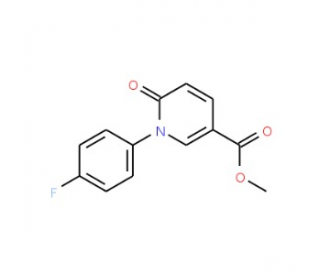详细说明
-
Purity
>95%, by SDS-PAGE visualized with Silver Staining and quantitative densitometry by Coomassie® Blue Staining.
-
Endotoxin Level
<0.10 EU per 1 μg of the protein by the LAL method.
-
Activity
Measured by its binding ability in a functional ELISA. When Recombinant Human VEGF R2/KDR/Flk‑1 Fc Chimera (Catalog # ) is immobilized at 0.5 µg/mL (100 µL/well), the concentration of Recombinant Human VEGF-Ax that produces 50% of the optimal binding response is approximately 1-6 ng/mL.
Recombinant Human VEGF-Ax weakly binds to Recombinant Human Neuropilin‑1 (Catalog # ).
-
Source
Chinese Hamster Ovary cell line, CHO-derived
Human VEGF-A
(Ala27-Arg191)
Accession # NP_001303939 | SAGQEEGASLRVSGTRSLTRKD |
| N-terminus | C-terminus |
|
-
Accession #
-
N-terminal Sequence
Analysis
Ala27
-
Structure / Form
Disulfide-linked homodimer
-
Predicted Molecular Mass
21 kDa
-
SDS-PAGE
22-29 kDa, reducing conditions
Carrier Free
What does CF mean?
CF stands for Carrier Free (CF). We typically add Bovine Serum Albumin (BSA) as a carrier protein to our recombinant proteins. Adding a carrier protein enhances protein stability, increases shelf-life, and allows the recombinant protein to be stored at a more dilute concentration. The carrier free version does not contain BSA.
What formulation is right for me?
In general, we advise purchasing the recombinant protein with BSA for use in cell or tissue culture, or as an ELISA standard. In contrast, the carrier free protein is recommended for applications, in which the presence of BSA could interfere.
| 9018-VE/CF | | 9018-VE |
| Formulation Lyophilized from a 0.2 μm filtered solution in HCl. | | Formulation Lyophilized from a 0.2 μm filtered solution in HCl with BSA as a carrier protein. |
| Reconstitution Reconstitute at 250 μg/mL in 4 mM HCl. | | Reconstitution Reconstitute at 250 μg/mL in 4 mM HCl.
|
| Shipping The product is shipped at ambient temperature. Upon receipt, store it immediately at the temperature recommended below. | | Shipping The product is shipped at ambient temperature. Upon receipt, store it immediately at the temperature recommended below. |
Stability & Storage: Use a manual defrost freezer and avoid repeated freeze-thaw cycles. - 12 months from date of receipt, -20 to -70 °C as supplied.
- 1 month, 2 to 8 °C under sterile conditions after reconstitution.
- 3 months, -20 to -70 °C under sterile conditions after reconstitution.
| | Stability & Storage: Use a manual defrost freezer and avoid repeated freeze-thaw cycles. - 12 months from date of receipt, -20 to -70 °C as supplied.
- 1 month, 2 to 8 °C under sterile conditions after reconstitution.
- 3 months, -20 to -70 °C under sterile conditions after reconstitution.
|
Background: VEGF
Vascular endothelial growth factor (VEGF or VEGF-A), also known as vascular permeability factor (VPF), is a potent mediator of both angiogenesis and vasculogenesis in the fetus and adult (1, 2). It is a member of the PDGF family that is characterized by the presence of eight conserved cysteine residues and a cystine knot structure (3). Humans express two sets of alternatively spliced isoforms of 121, 145, 165, 183, 189, and 206 amino acids (aa) in length (3, 4). Isoforms other than VEGF 121 contain basic heparin-binding regions and are not freely diffusible (3, 4). VEGF 165 appears to be the most abundant and potent of the angiogenic isoform set, followed by VEGF 121 and VEGF 189 (3, 5). The anti-angiogenic or “b” set of isoforms is differentially spliced to contain six alternative amino acids at the C-terminus, and are the more highly expressed isoforms in normal adult tissue (6). VEGF 165b, like VEGF 121 but unlike most angiogenic isoforms, does not bind heparins and is therefore diffusible (3). Human VEGF 165 shares 88% aa sequence identity with corresponding regions of mouse and rat, 96% with porcine, 95% with canine, and 93% with feline, equine and bovine VEGF 165, respectively. In addition to alternatively spliced VEGF isoforms, multiple fragments of VEGF can be generated by extracellular proteolysis (4). VEGFs bind the type I transmembrane receptor tyrosine kinases VEGF R1 (also called Flt-1) and VEGF R2 (Flk-1/KDR) on endothelial cells (3). Although VEGF affinity is highest for binding to VEGF R1, VEGF R2 appears to be the primary mediator of VEGF angiogenic activity (3, 5). VEGF 165 binds the semaphorin receptor, Neuropilin-1 and promotes complex formation with VEGF R2 (7). An extended form of VEGF-A, known as VEGF-Ax, results from the C-terminal addition of 22 amino acids (8). VEGF-Ax is produced by vascular endothelial cells, retains the ability to bind VEGF R2 but not Neuropilin-1, and functions as an anti-angiogenic protein (8). VEGF is required during embryogenesis to regulate the proliferation, migration, and survival of endothelial cells (3, 5). In adults, VEGF functions mainly in wound healing and the female reproductive cycle (5). Pathologically, it is involved in tumor development and tumor vascular leakage (9). Circulating VEGF levels correlate with disease activity in autoimmune diseases such as rheumatoid arthritis, multiple sclerosis, and systemic lupus erythematosus (10). VEGF is induced by hypoxia and cytokines such as IL-1, IL-6, IL-8, Oncostatin M, and TNF-alpha (5, 11).
-
References:
- Leung, D.W. et al. (1989) Science 246:1306.
- Keck, P.J. et al. (1989) Science 246:1309.
- Robinson, C.J. and S.E. Stringer (2001) J. Cell. Sci. 114:853.
- Vempati, P. et al. (2014) Cytokine Growth Factor Rev. 25:1.
- Byrne, A.M. et al. (2005) J. Cell. Mol. Med. 9:777.
- Nowak, D.G. et al. (2008) J. Cell Sci. 121:3487.
- Pan, Q. et al. (2007) J. Biol. Chem. 282:24049.
- Eswarappa, S.M. et al. (2014) Cell 157:1605.
- Goel, H.L. and A.M. Mercurio (2013) Nat. Rev. Cancer 13:871.
- Carvalho, J.F. et al. (2007) J. Clin. Immunol. 27:246.
- Angelo, L.S. and R. Kurzrock (2007) Clin. Cancer Res. 13:2825.
-
Long Name:
Vascular Endothelial Growth Factor
-
Entrez Gene IDs:
7422 (Human); 22339 (Mouse); 83785 (Rat); 281572 (Bovine); 403802 (Canine); 493845 (Feline); 30682 (Zebrafish)
-
Alternate Names:
MVCD1; VAS; vascular endothelial growth factor A; Vascular permeability factor; Vasculotropin; VEGF; VEGFA; VEGF-A; VEGFMGC70609; VPF; VPFvascular endothelial growth factor












